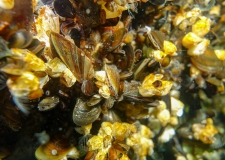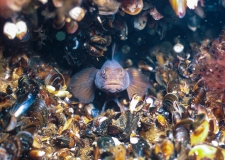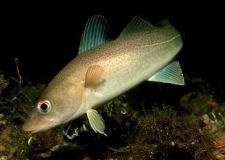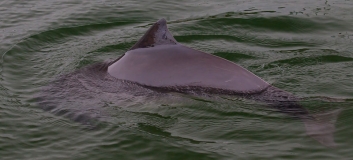The Western Rønne Bank HD site – Area I
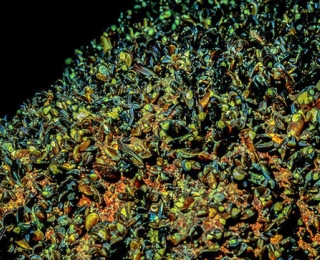
Facts Western Rønne Bank (HD site) – Area I of the complex area
|
Fact sheet |
HD site |
|
|
Habitat types |
Reefs |
approx. 65 km² |
|
Species/numbers |
Harbour porpoise (Phocoena phocoena) |
11-50 |
Important characteristics of Area I
The wall-like boulders are often overgrown with mussels. The bottom fauna, rich in numbers of individuals, ensures a great abundance of fish. Severely endangered harbour porpoises from the central Baltic Sea find plenty of food here.
The geo-hydrological conditions here result in unique and plentiful fauna and flora. Blue mussels settle densely on the rampart-like boulders. Red algae are also present but in distinctly lower densities than in the Fehmarn Belt or in the Kadet Trench and not down to the same depth. In addition, barnacles (Balanidae) still colonise several blue mussel banks. Fish species such as the two-spotted and black gobies (Gobiidae), viviparous eelpout (Zoarces viviparus), European sprat (Sprattus sprattus), Atlantic herring (Clupea harengus), flatfishes (Pleuronectidae) and Atlantic cod (Gadus morhua) find abundant food and hiding places.
Harbour porpoises are protected as a species of Annex II of the Habitats Directive. The harbour porpoises recorded up to now in Area I are presumably in winter individuals of the severely endangered eastern harbour porpoise population of the central Baltic Sea. This subpopulation totalling only about 500 individuals uses the area as a migration and wintering habitat. Mother-calf pairs have also been sighted here. These sightings are of particular importance as there are very few of these highly endangered small whales in the central Baltic Sea. Especially in cold winters, the area is important for the survival of individuals immigrating from Baltic Sea regions covered by ice. Existing obligations for Germany within the framework of the Agreement on the Conservation of Harbour Porpoises (within ASCOBANS) and the Habitats Directive have laid down the binding aim of restoring populations of this kind that are endangered in German waters and of safeguarding important habitats.
Plentiful bottom fauna ensures abundance of fish
The geo-hydrological conditions here result in unique and plentiful fauna and flora. Blue mussels settle densely on the rampart-like boulders. Red algae are also present but in distinctly lower densities than in the Fehmarn Belt or in the Kadet Trench and not down to the same depth. In addition, barnacles (Balanidae) still colonise several blue mussel banks. Fish species such as the two-spotted and black gobies (Gobiidae), viviparous eelpout (Zoarces viviparus), European sprat (Sprattus sprattus), Atlantic herring (Clupea harengus), flatfishes (Pleuronectidae) and Atlantic cod (Gadus morhua) find abundant food and hiding places.
